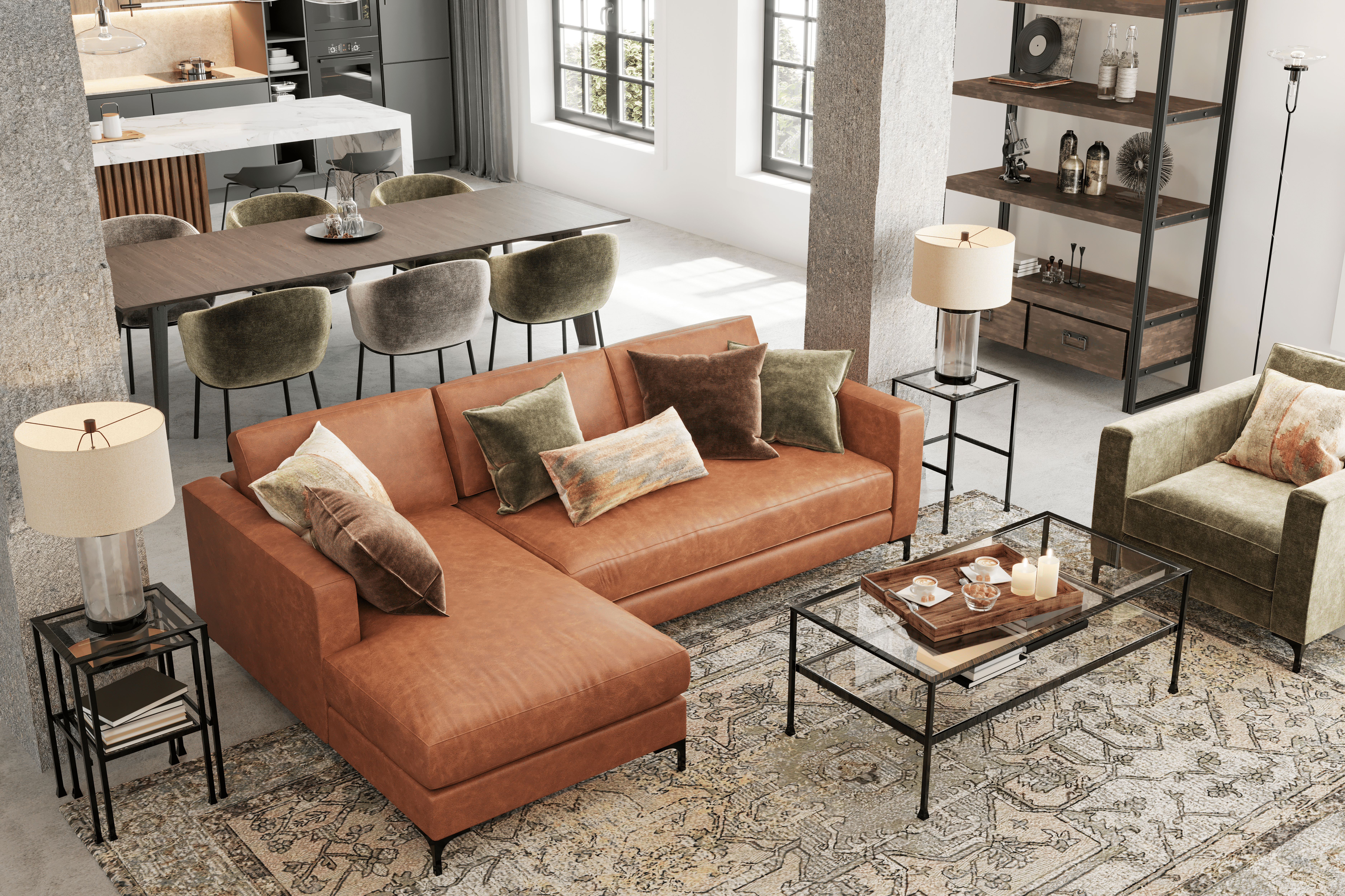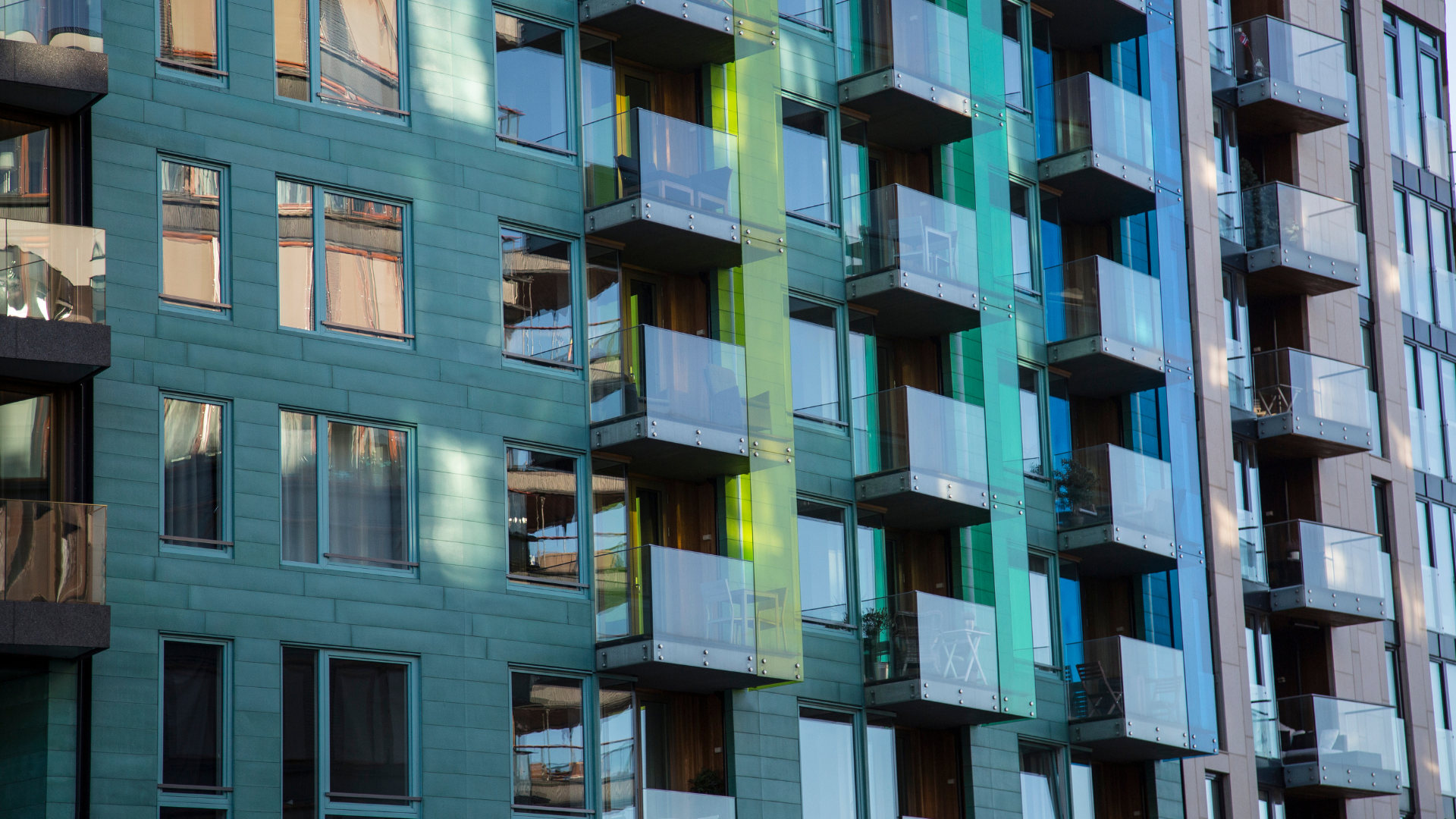The multi-family residential landscape is evolving, shaped by changing demographics, sustainability concerns, and technological advancements. As we approach 2024, several key trends are poised to reshape the design of multi-family residential buildings. Keep reading as we explore what to look for in multi-family residential design in the year to come!
Sustainability
As in all walks of life, sustainability is a cornerstone of modern multi-family residential design. Buildings are incorporating eco-friendly materials, such as glass rainscreen cladding, which offers durability, energy efficiency, and a sleek aesthetic. Other trending eco-friendly options include composite roofing tiles and fiber cement siding.
Designers are also prioritizing durability in their material selection, opting for materials that require few ongoing maintenance resources. Some examples include engineered quartz countertops, polished concrete floors, and hurricane grade storm windows.
Additionally, developers are prioritizing energy-efficient appliances, low-flow plumbing fixtures, and renewable energy sources like solar panels, reducing operating costs and minimizing environmental impact.
Adaptive Reuse
Building off the sustainability trend, renters are responding favorably to old buildings being repurposed into modern residences. Whether it’s old churches or warehouses, renters like the idea of cutting down on construction waste by inhabiting previously used facilities. As such, expect to see more rundown urban areas become revitalized into modern living quarters in the months ahead.
Versatility

Multi-family residential buildings are becoming more versatile, offering a range of unit types and layouts to cater to diverse lifestyles. Flexible floor plans, movable interior walls, and multi-functional spaces allow residents to adapt their living spaces to their evolving needs. To help limit noise transfer in these adaptable areas, acoustic panels for walls are an effective way to absorb sound and enhance aesthetics. This versatility ensures that buildings remain attractive to a broader range of tenants, enhancing long-term occupancy rates.
Technology Integration
Technology is transforming multi-family residential buildings, enhancing convenience, security, and sustainability. Smart home systems, controlled by smartphones or voice assistants, allow residents to control lighting, thermostats, and appliances remotely. Building management systems optimize energy usage, monitor air quality, and provide real-time maintenance alerts. Additionally, keyless entry systems and smart locks enhance security, while facial recognition technology streamlines access to common areas.
Community-Centric Spaces

Multi-family residential buildings are increasingly designed with community-centric spaces that foster social interaction and engagement. Amenity-rich common areas, such as rooftop terraces, fitness centers, and co-working spaces, encourage residents to socialize and build connections. Outdoor spaces, including courtyards, gardens, and dog parks, provide opportunities for recreation and relaxation.
Creative Workspaces
With an uptick in remote and hybrid employees in the rental market, many multi-family complexes are integrating remote office space for their residents. Some features include ergonomic furniture, connected screens, and customizable partition walls. Creative workspaces can help renters save space by not having to set up a fully-equipped home office in their private residence.
Safety Considerations
Safety is paramount in multi-family residential design. Buildings are incorporating robust safety features such as non-slip flooring, well-lit corridors, and secure entrances. Handrail systems, designed for both functionality and aesthetics, ensure safe navigation of stairs and balconies. Additionally, fire protection systems and emergency evacuation plans prioritize resident safety in the event of an emergency.
Curb Appeal

Curb appeal is essential for attracting potential tenants and enhancing the overall value of a multi-family residential building. Buildings are designed with visually striking facades, incorporating architectural elements like glass balconies, decorative cladding, and green walls. Thoughtful landscaping, including native plants and sustainable irrigation systems, creates a welcoming and eco-friendly environment.
Food Delivery Areas

Food delivery services saw an explosion in popularity during the COVID-19 pandemic and have cemented themselves as a standard service in our culture. To avoid the confusion of delivery people trying to find the correct address, modern multi-family facilities are building designated food delivery areas to provide a convenient place for orders to be fulfilled. While most complexes are providing a staging area for delivery vehicles to stand, more elaborate efforts include building mailroom-esque outbuildings for deliveries to be deposited into secure lockers.
Pickleball Courts
What once was a niche sport for an older demographic has become a full scale national phenomenon. The pickleball trend is all over social media, and renters are responding favorably to properties that include pickleball courts as one of their amenities. So as quaint as it may seem, expect to see more courts popping up in multi-family complexes in the year to come.
Planning for the Future: Residential Multi-Family Design in 2024
As we enter 2024, multi-family residential buildings will continue to evolve to meet the changing needs and preferences of residents. By embracing sustainability, versatility, technology integration, community-centric spaces, safety considerations, and curb appeal, developers can create buildings that cater to contemporary lifestyles and foster a sense of community among tenants. For more of the most trendy design ideas expected to take shape in the year to come, explore the resources at Gather for the leading insights in the industry!
Sam Willis is a freelance writer that loves sharing his knowledge and expertise in residential and commercial real estate, as well as engineering and construction. He lives in Atlanta, Georgia where he enjoys spending time with his wife and researching real estate trends in his free time. Sam’s work as a freelance writer can be found on Building Product Advisor, a construction industry resource site.



